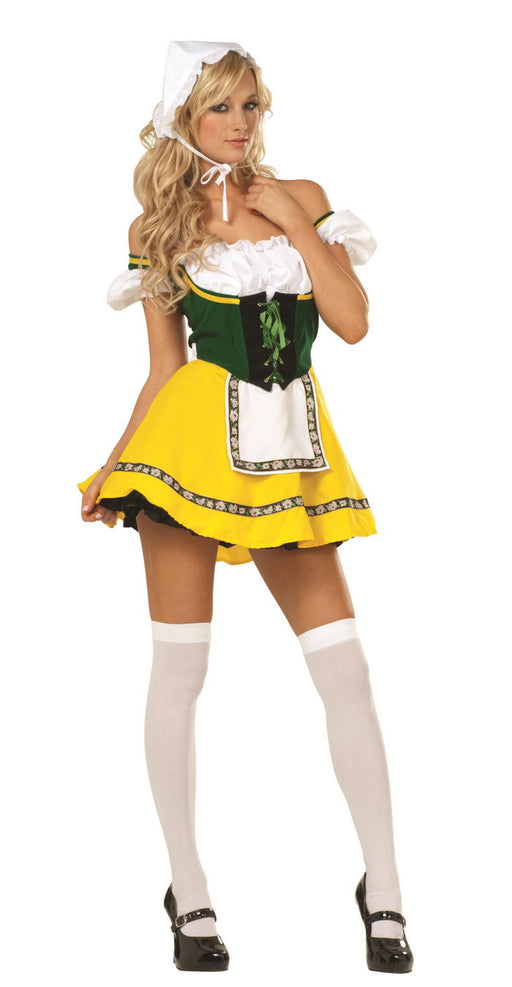
Spirit Week Planning: Building Hype for October Sports Events
Spirit Week is a time-honored tradition in schools, designed to build excitement and boost school spirit leading up to major sports events. As October approaches, schools across the country prepare for the big games, homecoming celebrations, and playoff showdowns, making Spirit Week the perfect way to engage students and create a festive atmosphere. With a combination of themed days, competitions, and community involvement, Spirit Week is an opportunity for students, staff, and even alumni to come together and show their school pride.
Planning a successful Spirit Week takes thoughtful preparation, creativity, and attention to detail. In this guide, we’ll explore how schools can plan and execute an unforgettable Spirit Week that builds hype for October’s sports events.
1. Choosing a Theme for the Week
The foundation of a great Spirit Week lies in the theme. The theme sets the tone for the week’s activities and allows students to express their creativity and school pride. Schools can choose a broad theme, such as "Under the Sea," "Decades Week," or "Superheroes," or tie it directly to the sports season, with themes like "Game On" or "Champions Week."
Once the theme is chosen, it should be reflected in all aspects of Spirit Week, from decorations and activities to themed dress-up days. The more cohesive the theme, the more immersive and engaging the experience will be for students and staff.
2. Planning Themed Dress-Up Days
One of the most popular elements of Spirit Week is the themed dress-up days, which allow students to express their creativity and individuality while still promoting school spirit. When planning dress-up days, it’s important to choose themes that are fun, inclusive, and easy for everyone to participate in. Schools should aim for a balance between classic themes and new, exciting ideas.
Some popular dress-up day themes include:
- Pajama Day – Students can come to school in their comfiest sleepwear, creating a fun and relaxed atmosphere.
- Twin Day – Students pair up with a friend or group to dress alike, fostering camaraderie and creativity.
- Decades Day – Students dress in the style of their favorite decade, from the roaring ‘20s to the neon ‘80s.
- Color Wars – Each grade is assigned a specific color to wear, creating a visual competition throughout the school.
- Sports Team Day – Students wear jerseys or apparel from their favorite sports teams, showing off their athletic pride.
When choosing dress-up themes, it’s important to consider the student body’s interests and preferences. Themed days should be accessible, allowing students to participate without needing to spend money on special outfits.
3. Organizing Competitions and Activities
Competitions are a great way to generate excitement and foster friendly rivalry during Spirit Week. Schools can organize a variety of contests that involve students, teachers, and even the local community. These competitions can range from simple activities like hallway decorating to more involved events such as talent shows or obstacle courses.
Here are some ideas for Spirit Week competitions:
- Hallway Decorating Contest – Each grade or homeroom is assigned a section of the school to decorate according to the Spirit Week theme. The best-decorated hallway wins a prize.
- Lip Sync Battle – Students or groups can compete by lip-syncing to their favorite songs. This fun event encourages creativity and brings laughter to the school.
- Trivia Competitions – Schools can host trivia contests during lunch or homeroom, with questions related to the school’s history, sports teams, or the Spirit Week theme.
- Class Games – Organize friendly competitions between grades, such as relay races, tug-of-war, or scavenger hunts. These activities can take place during lunch periods or pep rallies, with winning classes earning points toward an overall Spirit Week victory.
Offering prizes or rewards for winning teams or individuals adds extra motivation and excitement. These prizes can range from gift cards to school merchandise, further boosting school spirit.
4. Involving the Faculty and Staff
One of the most effective ways to build excitement during Spirit Week is by involving faculty and staff in the festivities. When teachers and staff participate in dress-up days and competitions, it creates a sense of unity and encourages students to get more involved. Faculty can also organize special activities for Spirit Week, such as a teacher-student dodgeball game or a talent show featuring staff members.
Schools can also host a “Teacher Twin Day” where students dress as their favorite teachers, or have a "Guess the Teacher" baby photo contest, where students try to match baby pictures with their current teachers. These types of activities build stronger connections between students and staff, enhancing the overall sense of community.
5. Pep Rallies: Bringing the Energy
No Spirit Week is complete without a pep rally. Pep rallies are a chance to showcase school pride and build anticipation for the big game. Whether it’s a Friday night football game or a homecoming showdown, the pep rally sets the stage for the excitement to come.
To make the pep rally memorable, schools should plan a variety of performances and activities that involve students from different groups, such as the marching band, cheerleaders, dance teams, and sports teams. Guest speakers, such as alumni athletes or motivational speakers, can add to the excitement. Schools can also incorporate interactive elements like games, where students and staff can compete in fun challenges, such as pie-eating contests or trivia matches.
Introducing the sports teams during the pep rally gives athletes a moment to shine, and it’s a great way to get the crowd pumped up for the upcoming game. Schools should also consider incorporating a Spirit Week championship, where the winning class or grade is announced at the rally based on points earned throughout the week.
6. Decorating the Campus
Transforming the school’s campus into a festive environment is a key part of building excitement for Spirit Week. From the moment students walk through the doors, they should feel the energy and enthusiasm of the week ahead. Schools can decorate hallways, classrooms, and common areas with banners, posters, and streamers that reflect the Spirit Week theme.
Student clubs and organizations can take the lead on decorating efforts, with each group responsible for different areas of the school. Schools can also encourage students to create their own posters and signs to hang in classrooms or hallways, showcasing their school spirit and support for the sports teams.
In addition to indoor decorations, schools can deck out the stadium or gym for game day. Balloons, flags, and signage can create a festive atmosphere that carries over into the big event.
7. Engaging the Community
Spirit Week isn’t just about the students—it’s about involving the entire school community. Schools can invite parents, alumni, and local businesses to participate in the festivities by sponsoring events, donating prizes, or attending Spirit Week activities.
Schools can also partner with local businesses to offer discounts or promotions for students who show their school spirit by wearing themed attire. For example, a local ice cream shop might offer a discount to students who come in dressed for Pajama Day. These partnerships help build excitement within the community and reinforce the connection between the school and its supporters.
8. Promoting Spirit Week on Social Media
In today’s digital age, promoting Spirit Week on social media is essential for building hype. Schools should create a dedicated hashtag for the week and encourage students to post pictures, videos, and stories of their outfits, activities, and participation. Platforms like Instagram, TikTok, and Twitter can be used to showcase the best-dressed students, share competition results, and generate excitement for upcoming events.
Schools can also host social media challenges, such as a "Best Spirit Outfit" contest or a video challenge where students create TikToks that show off their school pride. Winners can be announced at the end of the week, with prizes given for the most creative or popular entries.
9. Supporting the Teams: Building Anticipation for Game Day
While Spirit Week is full of fun and games, the ultimate goal is to build excitement and support for the school’s sports teams. Throughout the week, schools should make an effort to promote the big game, whether it’s through morning announcements, posters, or social media posts.
Pep talks from coaches or athletes, highlights from past games, and even special features on the players can be shared during the week to get students excited for the main event. The more students know about the team and the stakes of the game, the more likely they are to attend and cheer on their school.
10. Wrapping Up Spirit Week
The conclusion of Spirit Week should be a celebration of the school’s unity, creativity, and enthusiasm. Schools can host a final event, such as a tailgate party before the game or a post-game celebration, to bring everyone together and reflect on the week’s activities.
After the game, schools can continue the spirit by recognizing standout students, faculty, and athletes who went above and beyond during Spirit Week. Whether it’s the student with the most creative outfit or the class that won the hallway decorating contest, acknowledging these efforts helps build a lasting sense of pride and community.
Featured collection
Sexy Post Office Girl | Costume-Shop.com
Attention all aspiring letter carriers and mail enthusiasts! Prepare to deliver a package of seductive style and naughty charm with our Sexy Post O...
View full detailsNorthern Warrior Costume | Costume-Shop.com
Upgrade your costume game to legendary status with the Northern Warrior Costume! Designed for rugged adventurers and fearless warriors of the North...
View full detailsBeer Garden Babe Oktoberfest | Costume-shop.com
🇩🇪 Step into the Festivities with Bavarian Charm! Embrace the spirit of Oktoberfest in the Beer Garden Babe Costume from www.Costume-shop.com. Perf...
View full detailsSailor's Delight | Costume-Shop.com
🚢 Navigate the High Seas of Fashion! Command attention at your next party with the Sailor's Delight Costume from www.Costume-shop.com. Perfect for ...
View full detailsSexy Police Officer Hottie | Costume-Shop.com
🚓 Enforce Fun with a Dash of Flair! Step into the role of authority with the Sexy Police Officer Hottie Costume from www.Costume-shop.com. Designed...
View full details








Leave a comment